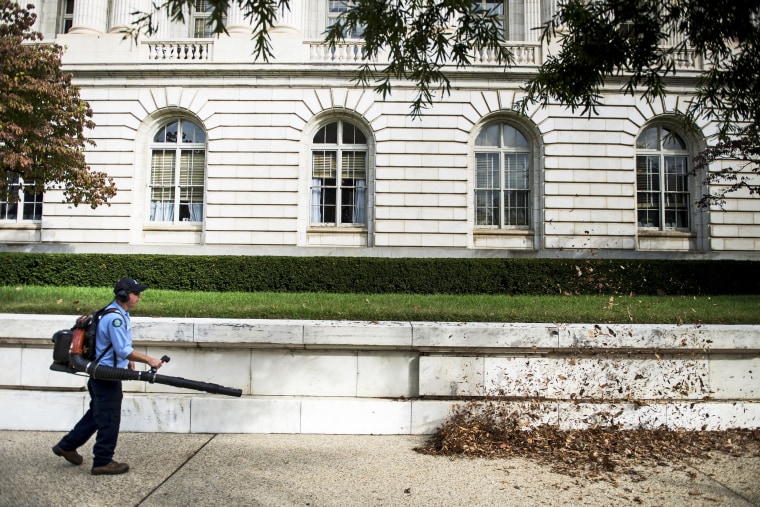Two decades ago, liberals and conservatives found common ground in the doctrine of government privatization. “It makes sense to put the delivery of many public services in private hands,” affirmed David Osborne and Ted Gaebler in their best-selling 1992 book, "Reinventing Government," “if by doing so a government can get more effectiveness, efficiency, equity or accountability.” Vice President Al Gore headed up a “reinventing government” initiative that concluded, among other things, that the Occupational Safety and Health Administration should avoid “hiring thousands of new employees” to perform worksite inspections by giving the job to private-sector inspectors instead.
A generation later, the federal government employs more than three times as many contract workers as government workers, and state and local governments spend a combined $1.5 trillion on outsourcing. One result, according to Demos, a nonprofit public policy organization, is that the federal government effectively pays $12 or less to nearly two million contract workers -- “more than the number of low-wage workers at Walmart and McDonalds combined.”
Now a new report by In the Public Interest, a nonprofit group that tracks government contracting, argues that privatization at the state and local level “contributes to the decline of the middle class and the rise in poverty-level jobs, thereby exacerbating growing economic inequality.”
"The false promises of privatization are triggering a race to the bottom."'
Public-sector pay is lower on average than private-sector pay, but at the low end of the pay scale the opposite is true: Workers with just a high school degree make 6% more in the public sector than in the private, and workers with a few years of college but no college degree make 9% more. For low-wage workers, then, privatization means even lower pay and fewer (or no) benefits.
“I was a housekeeper from Milwaukee County courthouse,” Mary Farrow told reporters on a conference call organized by In the Public Interest. Farrow said that working for the county she made $14.29 per hour plus health care and other benefits. Then, in 2010, the county turned housekeeping services over to a private contractor. “They offered me $8 an hour with no benefits,” Farrow said. She turned it down. Now, unable to find work, she’s had to raid her son’s college fund to cover living expenses.
In New Jersey, where 64% of all school food-service workers are contract employees, those who previously worked directly for school districts earned $4 to $6 less per hour after their jobs were outsourced.
"In California, contract school cafeteria workers collect $1,743 annually in public assistance because their private employers underpay them. In effect, the state is putting its own employees on the dole."'
“The false promises of privatization are triggering a race to the bottom,” Donald Cohen, executive director of In the Public Interest, said in the conference call.
Much of the “efficiency” realized by privatization lies in reducing former middle-class workers to poverty wages. Jared Bernstein of the Center on Budget and Policy Priorities, a Washington nonprofit, argued in the conference call that even from an efficiency point of view, privatizing low-end government jobs was self-defeating. “You get what you pay for,” Bernstein said. Lower wages for public services, he said, translate into “higher turnover and a decline in the quality of work.” It also means an uptick in welfare expenses. In California, contract school cafeteria workers collect $1,743 annually in public assistance because their private employers underpay them. In effect, the state is putting its own employees on the dole.
Outsourcing low-wage work is hardly limited to governments. It’s been a common practice for decades among corporations, which have been ever-more reluctant to employ directly anyone who earns, say, less than about $30,000 per year. As a consequence, these companies no longer offer much opportunity for anyone performing a menial job to make it to the top. That used to actually happen now and then. Sidney Weinberg started at Goldman, Sachs in 1907 as a janitor’s assistant and by 1930 was its chief executive. David Geffen started, as recently as 1964, in the mailroom of the William Morris Agency before advancing to Hollywood megamogul. Today, though, jobs like janitor and mailroom clerk are almost always outsourced.
Does Osborne, now a senior partner with a consulting firm, have second thoughts about privatization? “No, I don’t,” Osborne wrote in an e-mail. “We could subsidize higher wages than the marketplace provides, as we often do in the public sector, and tell ourselves we are all better off. But it would be a lie. The more of our dollars that go into taxes and fees to support public employees, the less we spend on other things, and the more demand we withdraw from the private economy. The end result: we are all poorer.”
“Far better,” Osborne said, “to support things like [the Earned Income Tax Credit] and food stamps and job training to help the working poor than to subsidize millions of public employees.”
But since when is government assistance an acceptable substitute for paying employees a living wage -- particularly when those employees themselves work for the government? In the Public Interest’s new report suggests that, at least for low-wage workers, we might be better off reinventing government back to how it was before liberals succumbed to privatization fever.
